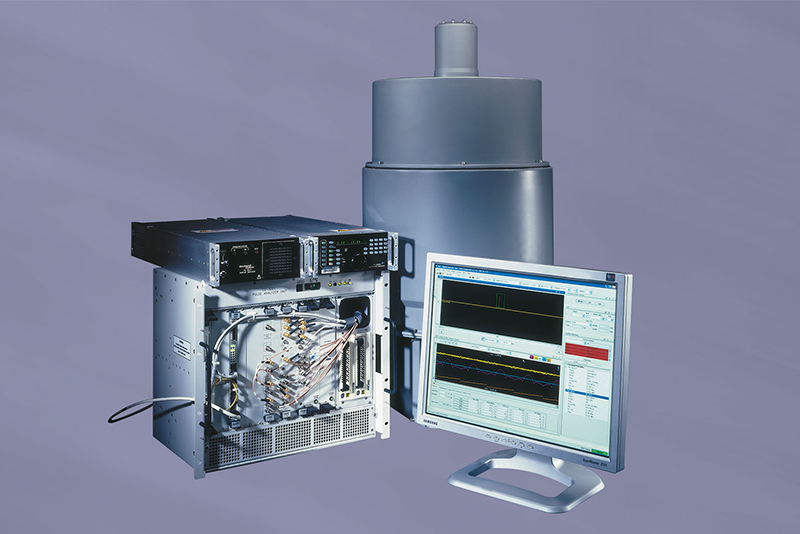
Dr. Thomas Withington – The Latin phrase ‘scientia potentia est’ (knowledge is power) encompasses the naval need to classify and process electromagnetic signatures in an area of operations.
As 2018 was drawing to a close a diplomatic rumpus erupted that, as of the time of writing (February 2018), still simmers. The matter involves a Republic of Korea Navy (ROKN) ‘Gwanggaeto the Great’ class destroyer and a Japan Maritime Self Defence Force (JMSDF) Kawasaki P-1 maritime patrol aircraft. The incident occurred in international waters in the east of the Sea of Japan, off the Noto Peninsula on Japan’s Honshu island. These are arguably the only two elements of the incident not in contention.

Japan’s Ministry of Defence (MOD) claims that its aircraft was illuminated on several occasions by a Thales STIR-180 X-band (8.5 gigahertz/GHz to 10.68GHz) / K-band (24.05GHz to 24.25GHz) fire control radar onboard the ROKN warship. Japan’s government has claimed that the ROKN’s actions violated the Code for Unplanned Encounters at Sea (CUES), something which is disputed by Seoul. The CUES comprises 21 signatories and aims to reduce the chances of hostile incidents occurring between the signatories, and to prevent them escalating if they do, although the agreement is not legally binding. Seoul has disputed Tokyo’s claims by arguing that the P-1 was repeatedly over-flying the ship at a low altitude of 500 feet (150 metres) while the destroyer assisted the rescue of a Democratic People’s Republic of Korea fishing boat experiencing difficulties. Citing the CUES, Seoul claimed that the P-1’s actions violated this agreement. Seoul has also denied that the warship employed the STIR-180, instead claiming that the ship’s Thales MW-08 C-band (5.25GHz to 5.925GHz) naval surveillance radar was being used to assist the rescue.
Radar Lock
The electromagnetic aspects of the encounter stoked the fires on 22 December. The Japanese MOD claimed its own analysis had confirmed that the Radio Frequency (RF) transmissions were from the STIR-180, presumably detected by the P-1’s Mitsubishi HLR-109B ESM (Electronic Support Measure).
Little public information exists regarding the HLR-109B, although some confidential EW practitioners informed the author that the ESM is one of the most advanced such systems flying today. It almost certainly covers a waveband of 500 megahertz/MHz to 18GHz, and possibly up to 40GHz. This would allow it to gather Electronic Intelligence (ELINT) on a wide array of ground-based air surveillance, fire control/ground controlled interception, naval surveillance and airborne radars, and Active Radar Homing (ARH) seekers equipping missiles.
The HLR-109B is reported to be a highly sensitive system capable of long detection ranges. It is reasonable to assume that the HLR-109B is capable of discriminating between the MW-08 and the STIR-180: Both use different RF wavebands, and the waveforms used by their radars will be significantly different; not least because the STIR-180’s function is to guide kinetic ordnance to its target, while the MW-08 performs general surface and air surveillance.
For the time being both side are maintaining their respective positions. That said the incident underlines the importance of electromagnetic situational awareness in the naval domain. So-called ‘radar lock’ incidents, where one party has illuminated the platform of another with a radar in an action perceived as threatening or belligerent, have occurred on several occasions in the Asia-Pacific in recent years. The danger of such incidents, as this latest occurrence underscores, is that intentions can be misinterpreted and tensions raised through such behaviour.
Whatever the reality of the incident involving Japan and the ROK, it was important that cool heads have prevailed and fire was not exchanged. Nevertheless in tense areas such as the East and South China Seas, where the People’s Republic of China (PRC) and several other nations maintain competing maritime and territorial claims, the concern must be that a similar incident in the future may trigger a skirmish which could quickly boil over into a regional conflict.
For example, in early 2013 People’s Liberation Army Navy (PLAN) officials admitted that the radar on one of its frigates locked onto a JMSDF destroyer when the two ships were around 70 nautical miles/nm (130 kilometres/km) north of the disputed Senkaku/Diaoyu Islands in the East China Sea.
Situational Awareness
Knowing exactly what is happening in the ether, (i.e. whether a vessel is being illuminated by a radar and, if so, what radar is involved) improves situational awareness immeasurably. On a warship the process of identifying whether the vessel has been detected by radar, the type of radar involved and determining its location is comprehended using an ESM.
In the maritime domain the key mission of an ESM is to intercept and analyse RF emissions from naval surveillance, navigation, fire control, air traffic control, airborne and missile seeker radars. At the core of an ESM is a computer which performs the signals processing using a pre-loaded ‘library’ of signal characteristics which have been collected by the navy, or by a particular countries’ armed forces writ large, over a number of years. The computer will attempt to match the characteristics of the detected signal with those loaded in its library to identify the type of radar and the waveforms it maybe transmitting.
The average ESM library can contain several thousand records and can be continually updated with new records as and when new radar systems, or waveforms, are discovered. Similarly, unidentified transmission can be stored in the library for later analysis. Put simply, ELINT processing comprises three steps: the collection of radar pulses from the electromagnetic environment, the sorting of these pulses into specific ‘pulse trains’ i.e. the association of one set of pulses with a particular radar type and finally using this process to identify the radar.
Analogous to the ESM’s identification techniques is its ability to determine a radar’s line of bearing from the ship, although this will not necessarily provide range. This can usually only be determined with a minimum of two separate ESMs which can all see the same target and thus triangulate its position. This is nonetheless challenging as radars transmit across a line-of-sight range and will need to be pointing at the ESMs for this triangulation to be performed.
In naval EW, the ESM will tend to provide details on the radar type and bearing, while it will be for a warship’s other sensors, such as its main surveillance radar to determine the target’s location. Nevertheless, the ESM forms a vital part of a ship’s self-defence, not to mention a task force’s overall situational awareness at the operational level by determining a radar’s type and bearing. Determining such factors can inform the crew of the action that they will need to take to either avoid a radar threat, jam it using electronic attack, or attack the platform carrying the radar with kinetic means.
At the operational level the ELINT gathered by the ESM can be shared to improve the overall situational awareness vis-à-vis the electronic order-of-battle and possible enemy intentions. Naval ESMs tend to cover a waveband of 0.5MHz to 18GHz allowing them to detect emissions from the radars described above. Some will extend up to 40GHz. This will enable them to detect higher-band radar emissions; those typically associated with so-called Millimetre Wave (MMW) radar. MMW radars typically transmit at frequencies upwards of 30GHz.

Missile Mayhem
Such radars are attractive to Anti-Ship Missile (AShM) designers as they use very shortwave wavelengths which can show targets in a high level of detail. This is important in the naval domain as it allows an AShM equipped with such technology to ‘see’ its target clearly, and thus discount other vessels in the target’s locale. This sharp definition also helps the radar to discriminate physical countermeasures such as chaff and corner reflectors from the target, thus making the weapon potentially difficult to spoof. Finally, MMW radars use comparatively small-sized antennae, thus deepening their attraction to AShM designers tasked with fitting radar seekers into space-constrained platforms.
AShMs are arguably the major threat motivating naval ESM acquisitions in the Asia-Pacific, more specifically, AShMs developed by PRC which have proliferated throughout the region and beyond. The Stockholm International Peace Research Institute has noted that, over the past decade, the PRC has exported almost 690 AShMs of various marques to countries around the region including Bangladesh, Burma, Indonesia, Pakistan and Thailand. These weapons have included China Aerospace Science and Industry Corporation C-802, Chinese Aerospace Group C-704/705, HY-2 and CM-400AKG missiles. Details are scant regarding the exact specification of the ARHs used by these weapons, although open sources strongly suspect that they transmit in X-band (8.5GHz to 10.68GHz).

Several of these are ‘legacy’ weapons. The C-802 design, for instance, has been in service since earlier this century, while the HY-2 can trace its lineage back to the Raduga P-15 Termit AShM family which first entered service with the Soviet Navy in circa 1960.
That should not lure naval EW practitioners into a false sense of security. Speaking to the author during the Association of Old Crows’ (AOC) EW Asia conference held in Singapore between 29-30 January, several sources spoke candidly regarding the threat that such weapons pose: “China’s missiles are scaring…everyone in the region,” one senior EW industry executive confided.
The fear factor in this regard, another stated, is because the weapons’ ARH technology is thought to have been continually upgraded and enhanced throughout their service lives, and further improvements are strongly expected. If anyone needed any illustration of the potency of the PRC’s AShMs, one need look no further that the attack against the Israeli Navy’s INS Hanit ‘Sa’ar-5’ class corvette on 14 July 2006. That day, the ship was struck by a C-802 launched by the Hezbollah Shia Islamist organisation from the coast of Lebanon from a reported range of 10nm (18.5km) which caused the deaths of four crew. Worryingly then, as now, the Israeli Navy represented one of the most technologically advanced maritime forces in the world, yet the insurgents were still able to score a spectacular propaganda victory against their adversary. Such incidents underscore the importance of ensuring that surface vessels are outfitted with up-to-date ESMs to detect such threats.
“They (the PRC) continually improve their anti-ship missiles,” another senior industry executive and former naval EW officer, told the author during the AOC event. Such modernisations may have included the retrofit of low power ARHs into these weapons. This will have the asset of effectively ‘hiding’ the missile’s radar transmissions within the prevailing natural and man-made ‘noise’ in the electromagnetic spectrum, meaning that the sensitivity of naval ESMs have to be especially sharp to detect such discreet signals.
Alongside such Low Probability of Interception/Detection (LPI/LPD) techniques these weapons’ ARHs may have received complex transmission waveforms designed to mask their transmissions, and electronic counter-countermeasure enhancements to enable the seeker to detect and discount jamming attempts using either physical soft-kill countermeasures such as corner reflectors or chaff. Frequency agility is another LPI/LPD technique which can help to both mask the radar’s transmissions and to outflank electronic attack by jamming.
The remedy to such challenges is the continued investment in state-of-the-art ESM technologies, particularly in detection and signal processing software to ensure that new ARH radar transmission techniques can be effectively detected and countered as and when they appear.
Conclusions
To say that naval ESMs aid situational awareness in the maritime domain would be an understatement. They are quite simply indispensable to understanding what is happening in the electromagnetic spectrum at the tactical level as well as contributing to the operational level electronic order-of-battle. Knowing what is emitting, and why, enables timely decisions to be made on when and how to deploy soft- and hard-kill capabilities against air or surface threats. The proliferation of AShMs shows no signs of abating in the Asia-Pacific, or elsewhere for that matter. Naval ESMs can at the very least help navies to understand what is out there, and how they may need to respond.












